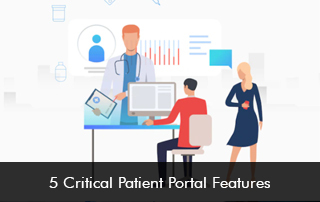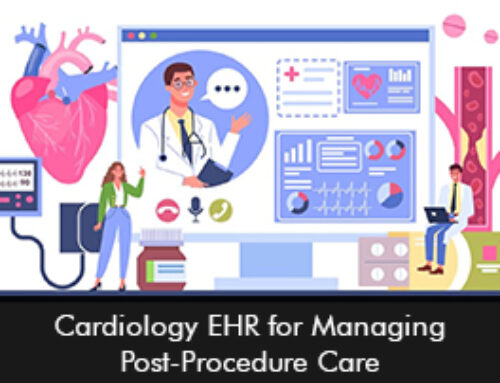Digital tools in healthcare have taken a solid place to enhance efficiency, streamline workflows, and improve care for patients. Healthcare providers have not shown resistance to deploying Electronic Health Records Software, E-Prescribing EMR Software, and Patient portal platforms. Clinicians know that patients of today not only expect good clinical encounters but want the best patient experience as well.
What is patient portal software?
A Patient Portal EMR Software is an online application that allows patients to stay empowered by communicating with their provider and have 24 hours access to view personal health information from anywhere. Patients also have the facility to use the robust patient portal platform to view lab results, schedule appointments, and even pay online bills.
Patient’s inhibitions in using the patient portal software
Patient portals offer various benefits for patients in the form of convenience and smooth communication with their providers. However, 62% of hospitals in the US report that their patient portal service is used by less than a quarter of all patients. Patients are not convinced about the value these powerful software solutions offer, because they might not be tech-savvy, lack of training, and have data security issues.
Healthcare organizations must address the above issues and get more patients on board to use the patient portal platform to reap maximum benefits. In this article, we will talk about the important features that can help encourage patients to use the patient portal software and boost adoption rates.
5 Patient portal features to get patients on board
- An intuitive interface – A clunky user interface is a sure-shot fire to stop patients from using the platform. An inconsistent user interface is a roadblock that makes it impossible for users to sign in. Then can discourage patients from using it altogether. A patient portal EMR Software should be user-friendly that is simple to navigate to create a seamless user experience. When there are no hurdles in using the platform patients will be stimulated to use it often and realize its advantages.
- Digital patient in-take forms – Digital registration helps to streamline the scheduling process and reduce wait times at the doctor’s office. A good patient portal platform offers the functionality of online registration which improves patient experience, saves time, and even benefits a medical practice by alleviating front-desk administrative burden.
- API integration – Most patient portals integrate seamlessly with EHR Software solutions. The API integration can also connect to other third-party digital solutions and IoT devices such as glucose monitors, and sleep trackers.
- HIPAA Compliant messaging – It is vital that all patient-provider communication is encrypted and offers security. Patients want peace of mind that their health information is safe. The two-way messaging platform should be HIPAA-compliant for proper data encryption.
- Streamlined payments – Patients want transparency when it comes to their healthcare financing. With features of insurance support, billing queries, and payment histories patients can be encouraged to use the platform. Healthcare organizations can manage patient collections and enhance recovery rates.
When patients are empowered by participating in their healthcare journey, patient engagement rates can go up, propelling improved treatment outcomes.







